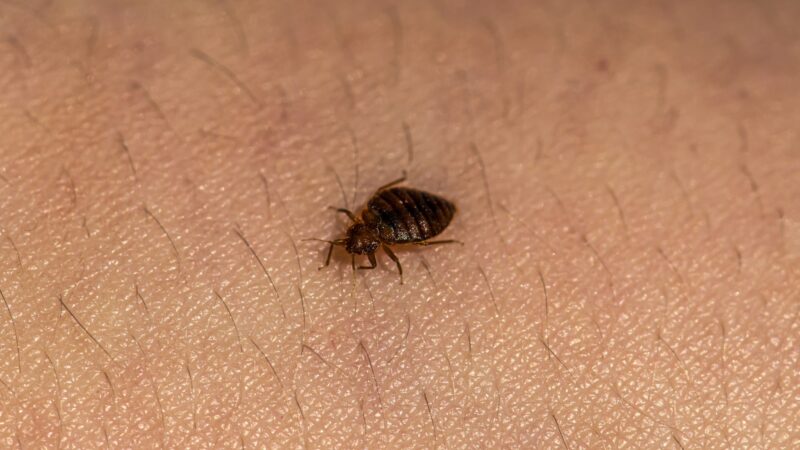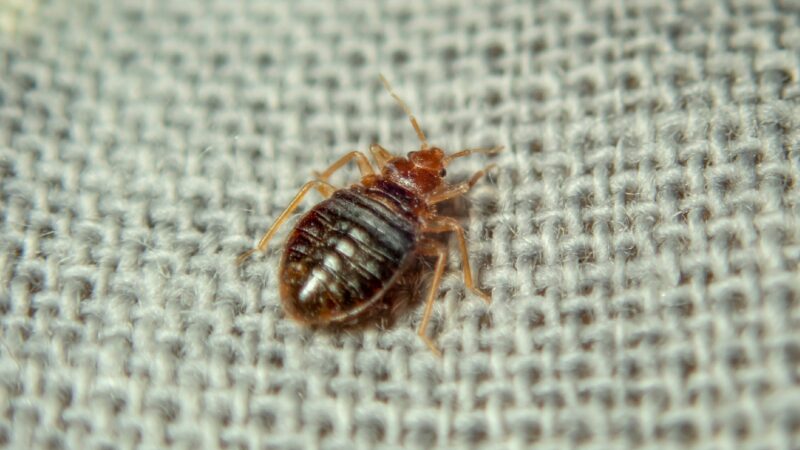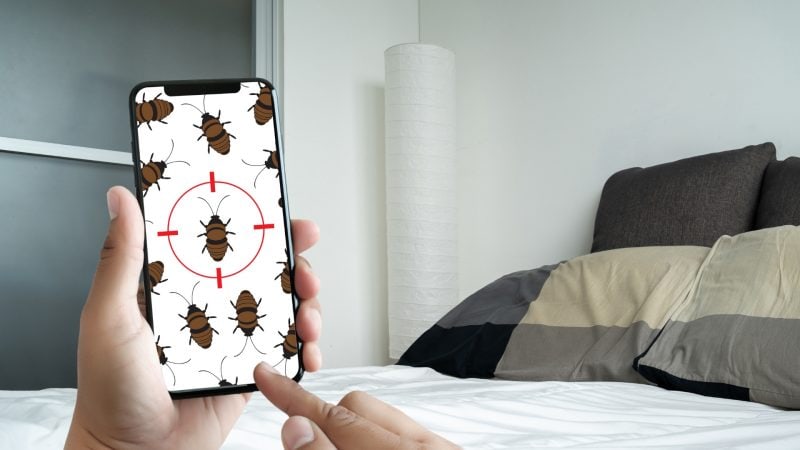Nowadays, bed bugs are widespread and can be found even in clean places. As soon as one finds out that bed bugs are an issue in his or her house, the person would want to get rid of the creatures straight away. But before finding out how you can cope with these insects, it is important to figure out how bed bugs are spread.
How are bed bugs spread? People frequently bring bed bugs with them when they travel. Bed bugs move through the folds and seams of baggage, overnight bags, folded clothing, beds, furniture, and other places they might conceal themselves. In case you have kids, the children might end up bringing the bed bugs on their backpacks from school.
In case you know exactly how bed bugs prefer to travel and everything about the habits of the insects, you will be able to, hopefully, prevent the infestation because as we know, nothing works better than prevention.
Where Do Bed Bugs Like to Live?

As bed bugs feed on our blood, they like to stay as close to humans as possible. Thus, our bed is the perfect place for these creatures. During the day, you won’t find the insects around as they are really good at hiding. But as night falls, bed bugs get out of their hideaways and find their ‘victims’.
The unique scent that humans have and the heat that our bodies produce, help the bed bugs find us during the night. Our smell is also how bed bugs differentiate us from other mammals. However, you should know that bed bugs can as easily suck the blood of animals, in case there are no humans around.
In general, bed bugs can be spread by any item that carries our scent. The creatures understand that these items will bring them to a human’s home – a place where they can thrive and multiply.
So, if you spot bed bugs in your house that does not mean that you are terrible with your personal hygiene. The chances are high that the insects got to your house on someone’s clothes, items of furniture, and so on.
How Do Bed Bugs Reproduce?

Every week, female bed bugs lay five to seven eggs. If fed properly, this equates to more than 250 eggs in a lifetime.
It takes the eggs about 10 days to hatch. Before becoming adults, bed bugs go through five nymphal (youth) stages after hatching. They shed their exoskeleton between each stage.
Bed bugs can feed up to once each day, but they need to eat at least once before each molt. Bed bugs mature into adults in a period of two to four months.
How Are Bed Bugs Spread?
If we all stayed at our houses and never let anyone in, the chances are high that there wouldn’t be any bed bugs. But because of the fact that humans like to travel, insects can easily move around with our help.
As bed bugs can’t fly and jump, they prefer to use our bags, clothes, and even purses to travel. However, if these creatures need to, they can easily crawl from one room to the other at a very high speed.
One single female can produce hundreds of eggs during her lifetime. By the end of the first month, your house will become home to over 50 developing bed bugs and a few dozen eggs. During the second month, the population of these insects will have twenty breeding adults, a lot of eggs, and a couple hundred developing bugs.
In only six months after one single pregnant female was brought into your house, you will have all of the rooms infested. Hundreds of thousands of bed bugs will be developing and thousands of eggs will be ready to hatch at any time. We bet these numbers make your skin itch!
In case you spot some brown dots on your bed, make sure to call the professionals. However, if you fail to notice the infestation at this stage, it will be pretty hard to eliminate the bugs during the third month.
How Do Bed Bugs Spread from Person to Person?

Unlike lice, bed bugs do not live on humans. Moreover, these insects can’t jump, so the bed bugs won’t end up jumping from one human to the other. However, bed bugs certainly can be spread from person to person, with the help of personal items.
After the bed bugs have been brought into the house, they can spend weeks and even months waiting for the perfect opportunity to attack. In case the bed bugs feel like the new home is not right for them, they can continue to ‘travel’ until they find the perfect place where they can thrive.
How Do Bed Bugs Spread from House to House?
If you are a frequent traveler, then the chances are high that you might ‘pick up’ a bed bug during your adventures. In a certain sense, bed bugs are experienced travelers as well. They like to stay at hostels and on airplanes, cruise ships, and any kind of public transportation.
Bed bugs certainly do like places that have a great number of overnight guests. So, you can end up moving the bed bugs from one place to the other on your luggage or clothes. You can easily encounter bed bugs at a university or a hospital.
Bed bugs can crawl from one room to the other at a really fast speed. On most surfaces, bed bugs can travel at a speed of 3-4 feet per minute. That’s exactly why bed bugs can quickly find hiding spots and travel from one place to the other, despite the fact that bed bugs can’t fly.
Bed bugs like to come back to their secret location after the meal. There, bed bugs will digest the blood and mate. If the surroundings are right, new bed bugs can emerge every 1.5 months. This is the time that the eggs need to develop into an adult.
The main aim of the bed bugs is to eat and mate. That’s why even a few bed bugs are extremely dangerous – those will start multiplying with lightning speed.
How Fast Do Bed Bugs Spread?

Bed bugs will start multiplying if they like their new home. In such a case, bed bugs can start laying anywhere between one and twelve eggs every single day!
In a lifetime, a bed bug can produce 200-500 eggs. It won’t take long for this pest problem to go out of control. That’s why it is extremely important to try and spot the infestation during the early stages. If there are hundreds of bed bugs in your house, it will be very difficult to get rid of all of them.
In order to survive, the bed bug has to eat. However, they can survive without a meal for months if the weather is warm and for a whole year if it is a bit colder.
Bed bugs can easily move from one room to the other if they feel like the conditions in the new place will be better. All-in-all, the bed bugs will need only a few months to take over the whole house. If you have brought one single female into your house, there will be around 50-60 nymphs by the end of the first month and another 30-40 eggs.
How to Stop the Spread of Bed Bugs?
The easiest approach to stop bed bug infestations from spreading is to periodically check for early warning symptoms. In this manner, you can eliminate any bed bugs before they spread. There are several techniques to prevent bed bug spread, including:
- Maintain a tidy bedroom free of trash, especially in the garment area, where bed bugs might hide.
- Avoid using used furniture. If you do, make sure to thoroughly inspect it for bed bug traces before bringing it inside.
- Put a cover over your mattress and box spring for protection.
- Regularly vacuum your home.
- When traveling, check your clothing and bags before departing for home.
- Fill up any gaps or cracks in your house’s walls.
List of Sources
Cimex lectularius Linnaeus (Bed Bugs), University of Florida
Koehler PG, Pereira RM, Pfiester M, Hertz J. (July 2011). Bed bugs and blood-sucking conenose. EDIS.
Potter, M. F. (2020). Bed Bugs. University of Kentucky.
- How to Get Rid of Copperheads | Practical Guide - August 27, 2023
- How to Get Rid of Corn Snakes | What Makes Them Aggressive? - August 27, 2023
- How to Get Rid of Alligators | Safety Measures and Removal Methods - July 16, 2023
